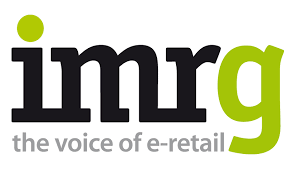Beast from the East Causes Increase in Online Sales; John Lewis Closes Online Gap on ASOS
by Hugh Williams on 29th Mar 2018 in News

RetailTechNews’ weekly roundup brings you up-to-date research findings from around the world. In this week’s edition: Beast from the East Causes Increase in Online Sales; John Lewis Closes Online Gap on ASOS; and Shifting Concept of Loyalty & Rewards.
Beast from the East Causes Increase in Online Sales
Online retail sales in the UK were up by 13% year-on-year in February, according to the latest research from e-tail trade body IMRG and tech consultants Capgemini.

Their e-Retail Sales Index showed that the so-called 'Beast from the East' snow storm, which hit the UK in the last week of February, helped contribute to a 3.5% week-on-week spike in traffic.
Online health & beauty sales were up by 34% year-on-year in the month, representing their highest growth in five years. Other encouraging growth sectors were clothing (up 15%, with accessories and footwear driving its performance), and gifts (up 9%).
The index said that overall year-on-year growth averages 13%, so far in 2018; although conversion rates in February were down on the same month last year. Average basket value rose by £11, in comparison to February 2017.
IMRG and Capgemini’s data showed that online retail sales via smartphone remained strong, with year-on-year growth at 38%. The growth is slowing down, however, with a 57% jump in m-commerce sales reported this time last year. Online sales on tablet devices continued their now four-month long decline trend, decreasing by 7% year-on-year.
John Lewis Closes Online Gap on ASOS
Online fashion giant ASOS managed to hold pole position on the list of most-visited UK apparel e-commerce sites between August 2017 and February 2018, besting a number of high street retailers, finds SEMrush.

Yet a new study has found that the gap at the top is narrowing, with traffic volume for second-placed John Lewis growing 39% over six months, while third-placed Marks & Spencer showed an 8% increase.
The growth in site traffic for Marks & Spencer, the UK’s biggest clothing retailer, might come as welcome news to company executives who reported poor online sales growth for non-food goods earlier this year. However, the results were not so favourable for fourth-placed Next, showing an 8% decrease in site traffic over the same time period. This follows news that the company is set to be overtaken by fast-fashion chain Primark as the second-biggest clothing retailer in the UK.
The biggest riser in the list was Zara, growing an enormous 43% in six months and climbing five positions to finish eighth on the list. New Look manage to cling on to spot number nine; but a 15% decrease in site traffic might set alarm bells ringing for the British retailer. Urban Outfitters completed the top 10, following impressive growth in site traffic of 33%.
Shifting Concept of Loyalty & Rewards
The concept of loyalty and rewards is shifting, with a over a third (37%) of consumers now willing to pay a fee for more benefits, according to a January 2018 Bond Brand Loyalty. Younger customers were more open to this value exchange than their older counterparts. Close to half of Gen Z (47%) and millennials (46%) said they would pay more for enhanced benefits. Boomers (23%) and seniors (16%) were far less interested. Meanwhile, Gen X predictably bridged the youngest and oldest segments, with 37% saying they would pay more.
Reaching the younger audience is crucial, as shown by March 2018 research from Bizrate Insights. This study shows that 31% of respondents had bought a product through a rewards programme in the past month; but this figure swelled to nearly half (47%) for those ages 18-29. Usage dipped to 39% for respondents ages 30-39, and slipped to 35% for 40-49 year-olds. The rate slumped to around 25% for those ages 50 and older.This content was originally published in RetailTechNews.







Follow ExchangeWire